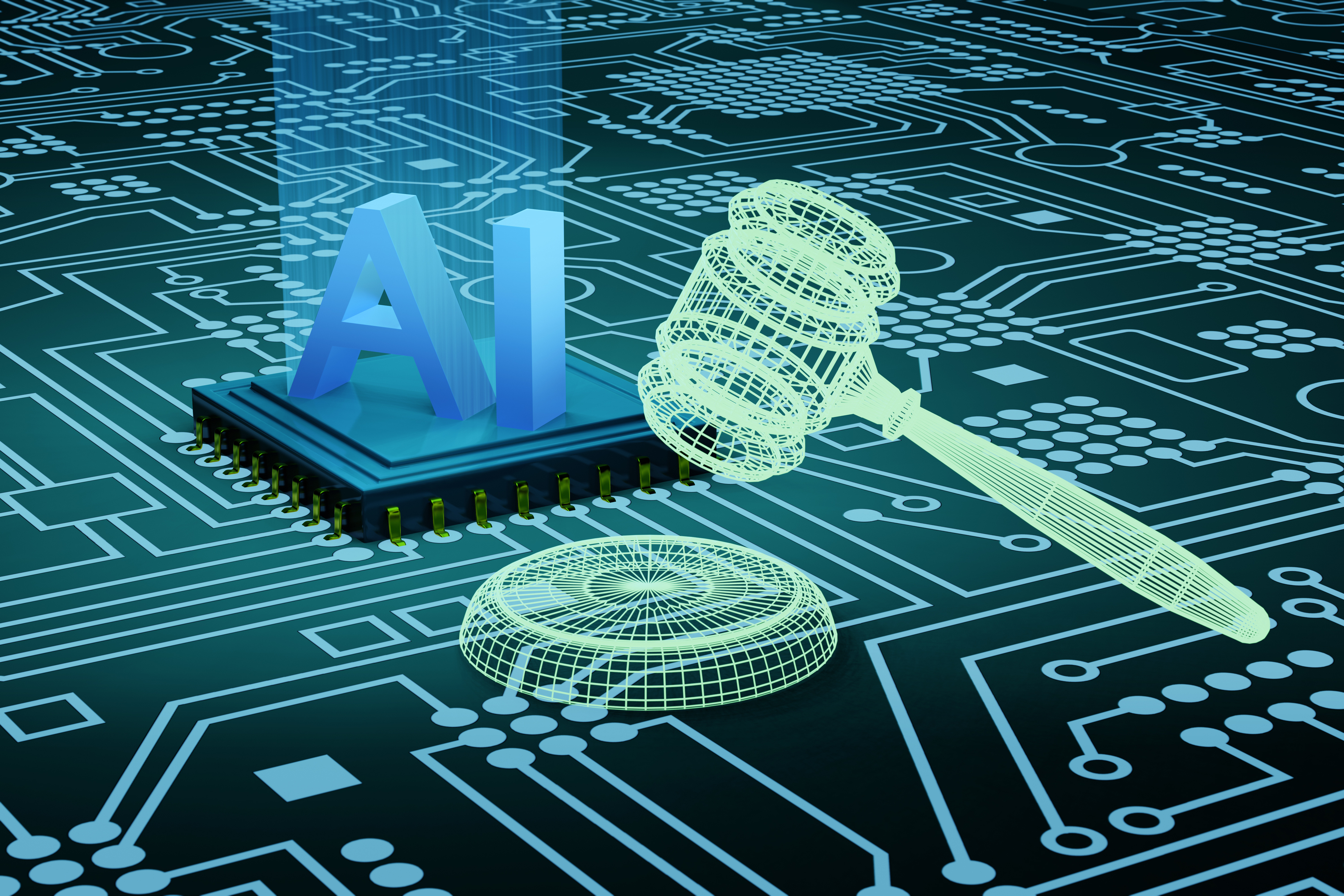An ensemble of mechanisms enables cloud hegemons (Microsoft, Google, Amazon) to plan the whole AI knowledge and innovation network by weaponizing interdependence in networks.
The AI boom brought sharp increases in profits and market capitalization for a few US big tech firms. Now start-ups are mushrooming around the world, particularly in core economies. Many of these appear to be unrelated, but in fact, they all form part of the same dysfunctional ecosystem. The influence the big tech firms exercise is profound and goes way beyond acquisitions.
Unfortunately, antitrust authorities thus far have concentrated on investigating potential mergers and acquisitions among companies in the same market. This shall be expanded in the AI age because apparently unrelated acquisitions can be motivated by hopes of accessing technology or talent or as a means to further expand and enter new business lines, such as Microsoft’s acquisition of Nuance for $19.7 billion announced in 2021 and completed a year later. Nuance offered a cloud-based solution for medical transcriptions, a business where Microsoft had no comparable product. Today, Nuance products are offered as part of Microsoft’s Software as a Service (SaaS) on its Azure cloud, including a very popular SaaS that is a voice-to-text recognition product specialized in radiology.
Big Tech’s venture capital
At least as important is another reason big tech firms seek out smaller firms. They are using corporate venture capital investments to steer AI development and get privileged access to what start-ups are working on. The relation between Microsoft and OpenAI is a case in point as well as the more recent investment of the former in the French start-up Mistral. Such operations frequently escape regulations because, more often than not, start-ups receiving big tech funding are still in the early research and development stage. Hence, they are not selling in any market at all or offering solutions that are complementary instead of substitutes to those offered by Big Tech (Rikap, 2023).
For instance, Microsoft does not offer its own Large Language Models (LLMs) on its cloud Azure but those of other companies, such as Meta and OpenAI. It also sells processing power and other computing services complementary to or based on OpenAI technology. LLMs are trained, prompts are processed and new applications based on existing LLMs are offered as cloud services.
This complementarity between LLMs and the cloud makes the cloud giants -Amazon, Microsoft, and Google- keen to invest in AI start-ups working on new AI models or applications of these models. This is a way to ensure that these emerging companies build their architecture and run fully on the existing clouds controlled by the giants. Every time an LLM runs on these platforms, the cloud provider earns not only a fee from those LLMs offered as services - as in every marketplace - but also additional charges for processing power. When the big tech cloud firm also owns a stake in the company providing the LLM, as in the case of Microsoft with OpenAI, it also gets a share of its profits.
Microsoft also uses the fact that it is investing in competitors to OpenAI to inhibit antitrust scrutiny of possible collusive behavior. Its diversification also highlights its capacity to control start-up companies broadly and create an ecosystem around its cloud. By fostering competition among complementors, Microsoft pushes them to further focus on efficiencies related to specialization instead of attempting to diversify and become potential rivals.
Such placement of organizations within the AI stack reinforces an innovation pattern characterized by a small, stable core of lead firms and a turbulent periphery of many smaller players (Rikap, 2023). The strategy facilitates the systemic value capture from innovation produced in the peripheries by those at the core, cementing long-term intellectual monopolies that disproportionately capture rents from innovations that, at best, the giants have only partially developed (Durand & Milberg, 2020; Pagano, 2014; Rikap, 2021).
Dominating from the cloud
A related angle is the control beyond ownership exercised by Amazon, Microsoft, and Google through their clouds over any organization, be they funded or not by big tech. The public cloud is a global outsourcing architecture where organizations pay for accessing computing services. Within the tech sector, those paying often use cloud services connected to their own software to create new services that will be offered on those clouds. For instance, start-ups developing applications based on AI models rent AI services from big tech clouds that assist the development of those AI field-specific applications.
Rather like Facebook and other firms that achieved dominant positions by offering their services for free to users, cloud giants offer many services for free to attract more clients. By 2023, AWS offered 10 free machine learning services for between 1 and 12 months. Cloud credits represent extremely low additional costs for big tech. Most computing services rely on similar lines of proprietary code that can be resold many times. In terms of processing power or storage capacity, having small projects consuming a very minor portion of Big Tech’s colossal infrastructure has very low opportunity costs.
Credits can be seen as angel or venture capital money that is targeted to specific uses, directing new firms to work on building AI applications on top of the models controlled by Big Tech and their satellite companies. These computer vouchers encourage migration to the cloud. For a company the size of Amazon, Microsoft, or Google, expanding their marketplace by providing credits to start-ups that not only use their cloud but will probably end up offering their services on their clouds is both a source of direct revenues and long-term consolidation, since the larger the marketplace, the more likely that other companies will also choose that cloud.
An additional aspect is particularly sensitive in the AI space. In pre-competitive markets where what matters is dominating the technology and pushing the frontier forward ahead of others even before defining a concrete business model, capturing the talent can mean virtually dismantling companies. The same three cloud giants are aggressively headhunting talent from start-ups. This not only avoids scrutiny by regulators but is also a cheaper bet. They acquire only the assets valuable for reinforcing the intellectual monopoly. This is what the venture capital firm Andreessen Horowitz defines as acquihires. The term came to light when Microsoft acquihired two of the three founders and many of the employees of the AI start-up Inflection.ai. This was a company that had previously received Microsoft’s venture capital. The two founders now employed by Gates’ colossus were also the cofounder of DeepMind and one of its former chief scientists. They had left Google, founded Inflection.ai, and are now at Microsoft. Tracking the paths of key talent in AI tells a much more complex story of the ways in which Big Tech companies control the field than only looking at company relations.
A final angle that is not exclusive to AI but that is becoming even more prevalent as it develops are collusive agreements among leading corporations. It is true that often these are kept secret, but leading companies are more openly disclosing the signature of “strategic partnerships” that contribute to concentration and the perpetuation of those at the top. In 2023, it was announced that Oracle will operate and manage its Oracle Cloud Infrastructure services directly within Microsoft’s data centers. Likewise, SAP has its own public cloud but also offers its Enterprise Resource Planning (ERP) system on every major cloud provider, even at Microsoft Azure while Microsoft sells its own ERP solution — Dynamics 365 — that competes with SAP’s cash machine.
Corporate weaponization of interdependence: network market power
Taken together, the ensemble of these mechanisms enables cloud hegemons to plan the whole AI — and other digital technologies — knowledge and innovation network as well as potentially emerging markets by weaponizing interdependence. The idea of weaponized interdependence in networks was proposed by Farrell and Newman (2019) to explain how asymmetric global networks controlled by multinational corporations can be used by those companies’ home states to advance their political goals by leveraging on companies’ network position.
Farrell and Newman (2019) and follow-up studies focus on the state as weaponizing the network. Even Gjesvik (2022), who recognized that the US state needs to bargain with US big Tech to weaponize the network of internet submarine cables, only sees states weaponizing network interdependence. Extending this concept to corporations, US big tech companies themselves can be said to be directly using their centrality in global production, distribution, and innovation as a coercive tool to exercise network power (Rikap, 2024). Their centrality in the global network, as I have already highlighted, is explained by their disproportionate appropriation of knowledge. By mapping the co-production and assetization of intangibles and considering their impact on accumulation at the firm level, antitrust agencies can prevent their accrual and thus anticipate market power abuses and prevent related socioeconomic harms.
References
Cockburn, I. M., Henderson, R., & Stern, S. (2018). The impact of artificial intelligence on innovation. National Bureau of Economic Research. Working Paper 2449; https://www.nber.org/papers/w2…
Durand, C., & Milberg, W. (2020). Intellectual monopoly in global value chains. Review of International Political Economy, 27(2), 404–429. https://doi.org/10.1080/096922…
Farrell, H., & Newman, A. L. (2019). Weaponized interdependence: How global economic networks shape state coercion. International Security, 44(1), 42–79.
Gjesvik, L. (2022). Private infrastructure in weaponized interdependence. Review of International Political Economy, 1–25.
Pagano, U. (2014). The crisis of intellectual monopoly capitalism. Cambridge Journal of Economics, 38(6), 1409–1429.
Rikap, C. (2021). Capitalism, Power and Innovation. Intellectual Monopoly Capitalism uncovered. Routledge.
Rikap, C. (2023). Intellectual monopolies as a new pattern of innovation and technological regime. Industrial and Corporate Change. https://academic.oup.com/icc/a…
Rikap, C. (2024). Varieties of corporate innovation systems and their interplay with global and national systems: Amazon, Facebook, Google and Microsoft’s strategies to produce and appropriate artificial intelligence. Review of International Political Economy.
Cecilia Rikap is Associate Professor of Economics and Head of Research at the Institute for Innovation and Public Purpose, University College London.




